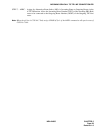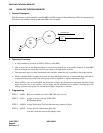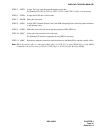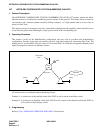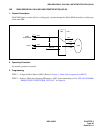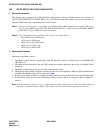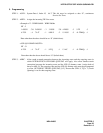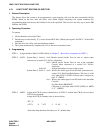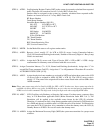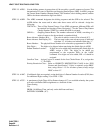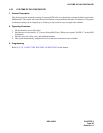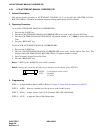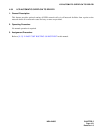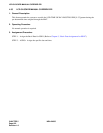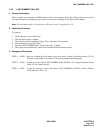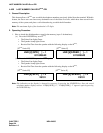
NDA-24305 CHAPTER 5
Page 97
Revision 1.0
LEAST COST ROUTING-3/6-DIGIT-PRI
STEP 4: ATRK - Set Originating Register Trunks (ORT) to the system in a quantity calculated from expected
traffic. Registers are located on levels 0-3 of any 8RST circuit card.
Senders must be assigned to the system in a quantity calculated from expected traffic.
Senders are located on levels 4-7 of any 8RST circuit card.
RT: Route Number
Trunk Route Number
Intraoffice Route Number (901-931)
901-ATT 912-ORT for ATT
902-ORT 913-TCFT for ATT
903-IRT 915-
905-Sender 916-MFCR
909-DCFT 917-MFCR
919 to 926-Modem
TK: Trunk Number
TN: Tenant Number
RSC: Route Restriction Class
SFC: Service Feature Class
STEP 5: MBTK - Set the Make Idle status to all register sender trunks.
STEP 6: ANPD - Reserve a level, usually “9”, for LCR or LCR (S) access. Assign Connection Indexes,
CI=N, H; Normal and Hooking (hookswitch). Number of Necessary Digits is 1. Busy Lamp
Field is not activated.
STEP 7: ASPA - Assign the LCR (S) access code, Type of Service, SRV = LCR or SRV = LCRS. Assign
route number for a dummy route associated with this access code.
STEP 8: Assign Connection Indexes, CI = N, H; Normal and Hooking (hookswitch). Assign data “1” for
second Dial Tone, parameter (2nd DT). Assign data “1” to AH parameter if Procedure II is used for
AUTHORIZATION CODE [A-20].
STEP 9: ARNP - Assign the physical route numbers as assigned in ARTD and relate these routes to the LCR
(S) access code as assigned in ASPA for SRV = LCR (S). The LCR (S) access code is
usually “9”. The routes to be assigned will be those routes listed in the various OPRs of the
AOPR command.
Note:
These same routes may also be listed in ASPA for SRV = OGC. In that case, these routes may also be
available via direct dial access codes. In ARNP, these access codes are not assigned to implement the
LCRS service in this command. This digit code is the first digit used when assigning ATDP table.
STEP 10: ARSC - LCR (S) utilizes only Bothway or Outgoing Only routes. For these routes, construct allow,
deny, or Toll Restriction applicable tables (Route Restriction Index RRI 2 & 3). Toll
Restriction will be applied to the available route chosen by the LCR (S) selection.
Therefore, if a station user dials a long distance number and is restricted in Toll Restriction
for a DDD and the only available route is a DDD, the call will be denied. Toll Restriction
acts upon the LCR (S) selection. Also, remember to allow the dummy route, the LCR (S)
Dummy Route to all RSCs. Do not toll restrict the dummy route.
STEP 11: AMND- Assign the Maximum Necessary Digit (MND) the system must translate for a proper route
selection.



